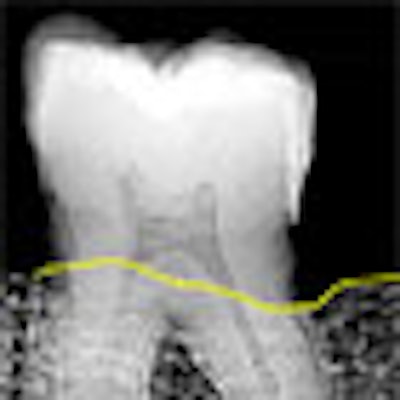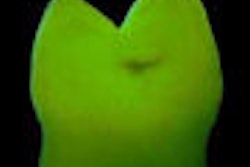
Computers can see caries that people can't. So said David Gakenheimer, Ph.D., of PracticeWorks, reporting recently on a successful test of software he designed to analyze dental x-rays for signs of caries.
Using the Logicon Caries Detection program, dentists detected significantly more early proximal caries than they could just by looking at x-rays, Gakenheimer said.
"The performance of dentists more than doubled using Logicon over visual diagnosis, which is an interesting and remarkable result," he said at the recent Computer Assisted Radiology and Surgery (CARS) meeting in Barcelona, Spain. "If dentists were trained in using the software in an optimum fashion, their performance could have tripled."
But at least one independent researcher remains skeptical. "I have some questions about the study design," said Edwin Parks, D.M.D., M.S., director of dental radiology at the Indiana University School of Dentistry in Indianapolis.
To test the prowess of the software, Gakenheimer and his colleagues, including University of Louisville researchers, obtained a set of x-rays used by a single dentist to diagnose proximal caries, along with photographs that showed any restorative work the dentist did on the teeth in the images.
They discarded those images in which the caries were most obvious, leaving them with 24 images with 116 surfaces, all of them "difficult and subtle cases." Of these, the dentist had restored 28 surfaces, confirming as he did so that caries had entered the dentin.
The researchers next asked a team of 12 licensed dentists, none of whom had used Logicon before, to examine the x-rays without knowing which teeth had been restored. First they looked at the x-rays without enhancements. Then they used different Logicon features to enhance the image. They got better results when they used the program's most sophisticated tools, according to Gakenheimer:
- Without enhancing the images, the dentists were only able to identify 30% of the surfaces that needed restoration.
- By adjusting brightness and contrast, they caught 34% of these surfaces.
- With a sharpness filter, the dentists caught 39%.
- Using a density analysis and caries pattern recognition tool (the program's signature feature), they caught 69%.
- When Gakenheimer and a colleague adjusted the dentists' calculation using an additional region of interest tool, they detected 93% of the surfaces needing restoration.
The results were better than those in a 1998 study that found only a 20% improvement in dentists' detection abilities, Gakenheimer reported. Since then Logicon has been improved with full-screen image filters, better edge-finding algorithms to work around small tooth overlaps, and the region-adjustment tool, which performs multiple calculations automatically on a proximal tooth surface.
Dr. Parks said he likes the idea of improving the program's edge-finding ability. But he questions whether an x-ray can ever provide the three-dimensional information needed to determine when a caries needs restoration. And he challenges the data against which the dentists' diagnoses were compared. In essence, the researchers assumed that the dentist who provided the x-rays was accurate in his own decisions about which teeth to restore.
"The way they determined the accuracy of the instrument was to restore the tooth," Dr. Parks said. "You cut out an awful lot of material when you do that." And although this dentist provided photographs to verify the condition of the teeth, photographs don't always give the full picture. "There has to be a tactile element," he said.



















